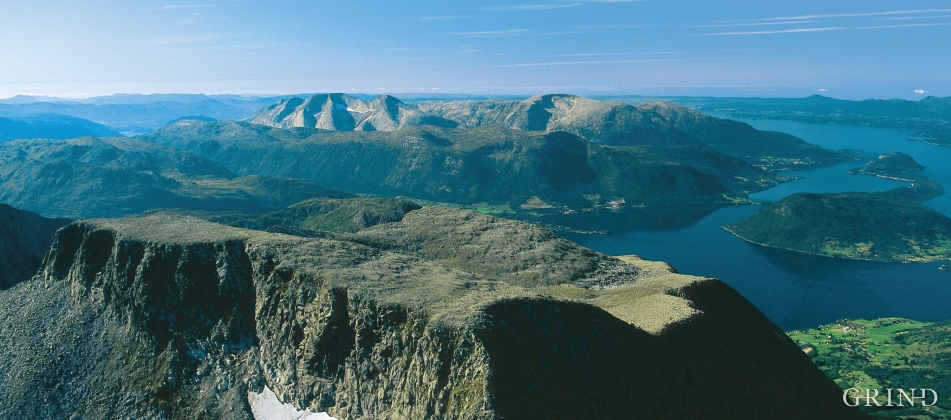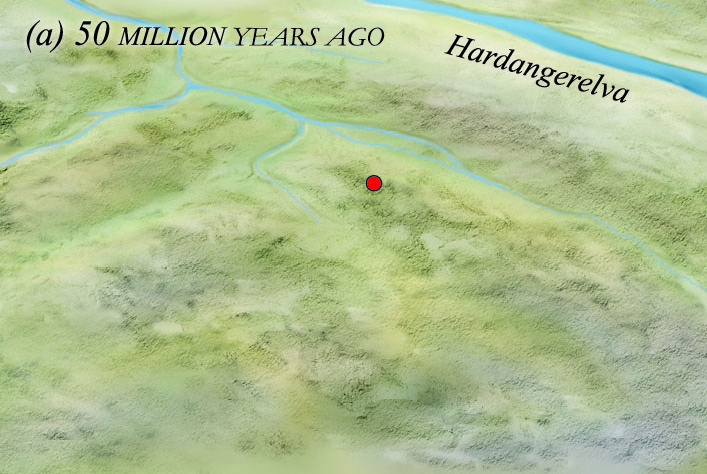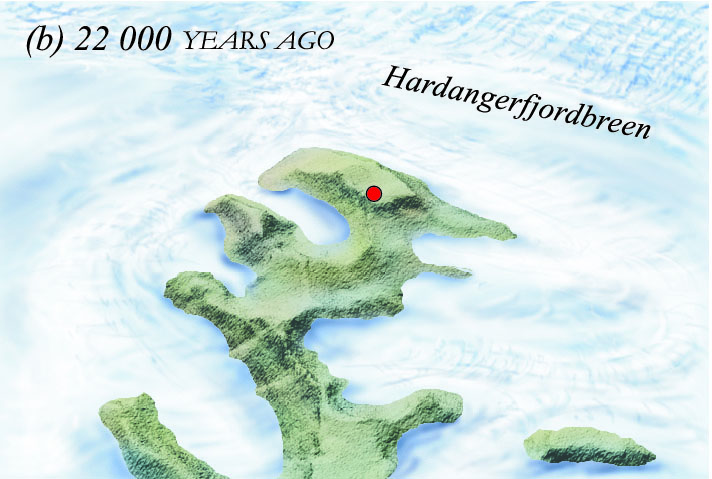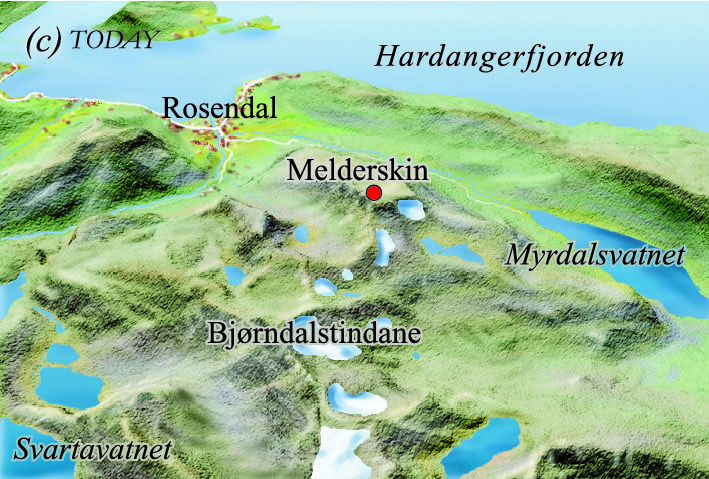Published: 20.07.2015 | Author: Atle Nesje, Endre Skaar
MELDERSKIN - ONCE A NUNATAK?
Melderskin, the towering and majestic landmark at Rosendal, rises 1462 metres above sea level. The top area is smooth, but slightly inclined. Geologists think that the area is a remnant of a weakly undulating landscape, that originated near the sea, long before the Ice Age set in.
These tops, which also include the bedrock that Folgefonna lies on, are the remains of landscapes dating back to the earth's Mesozoic Age and the first part of the Cenozoic (a in diagram). Later in the Cenozoic the land rose, and rivers carved down through the bedrock. As the many ice ages set in, the landscape became formed as we know it today. The land was covered by ice for long periods, but during the last Ice Age the tops of the highest Kvinnherad mountains may have stuck up from the ice as nunataks, like the naked mountains that tower over the ice on Greenland.
Around the tops on Melderskin lies a continuous cover of stone blocks that were weathered loose by frost shattering directly from the bedrock under. We call this a "block field". Block fields are also found on the other side of the high mountains in the same area, such as on Gygrastolen, Blåhatten and the mountain southwest of Uskedalen. These block field areas do not show signs of having been covered by any glacier, since that would have removed the blocks. But, the lower limit of the block fields are often sharp, with clear signs of the glacier's activity below. In South Norway this boundary, where one can find it, has been interpreted as the highest local limit to the innland ice, when it had its greatest extent under the last Ice Age about 21 000 - 23 000 years ago.
Melderskin is littered with high cliffs. At its north-, east- and south- sides there are well developed log chair-shaped land forms, known as cirques. These cirques are mainly formed by smaller glaciers. There have probably been glaciers in the cirques through several ice ages. During the last larger glacier advance, during the colder Younger Dryas period (11 500 - 12 800 years ago), the ice that lay north of Bjørndalstindane deposited several side- and end moraines. Moraine ridges right in front of small glaciers and the snowfields that remain in the cirques today, are believed to have been formed under "The Little Ice Age" during the middle of the 1700s.
Downdrafts and Cyclones
Over Folgefonna the wind cools the air down. The colder air, which is heavier than the warmer air around it, flows down over the mountainside. This can give strong downdrafts through the valleys of Muradalen and Melsdalen . When this occurs together with powerful low pressures in toward the coast, and the centre if it lies south of Hordaland, there will also be a strong easterly wind at higher elevations. These two wind systems, when they occur together, can give unusually strong wind down in the valleys, often with powerful and numerous cyclones. These are triggered by the special topography at relatively high elevations over Rosendal, and thereafter the air stream heads out toward the sea, where it commonly strikes a good distance from land. These cyclones, often of hurricane strength, suck up water from the sea and look like watercolumns that "walk" out over the fjord. These water columns often have a small diameter, but can be both 100 and 150 metres high.
On its way out to sea, the original water column sometimes may hit so low that it can do severe damage to both houses and trees. House roofs have been lifted and carried several hundred metres away.
- Diesen, M. G. B. 2003. Den vertikale isutbredelse i Kvinnherad under siste istid. Upublisert hovedoppgave, UiB.
- Fylkesmannen i Hordaland.2003. Folgefonna nasjonalpark med tilliggjande område for landskapsvern.Konsekvensutgreiing og verneframlegg – høyringsutgåve august 2003. Fylkesmannen i Hordaland,MVA-rapport 15/2003.







